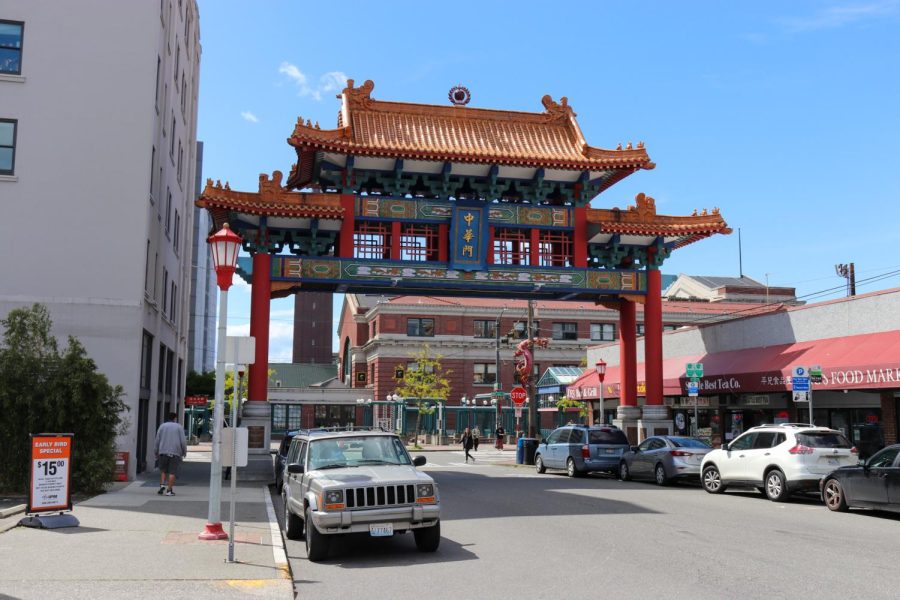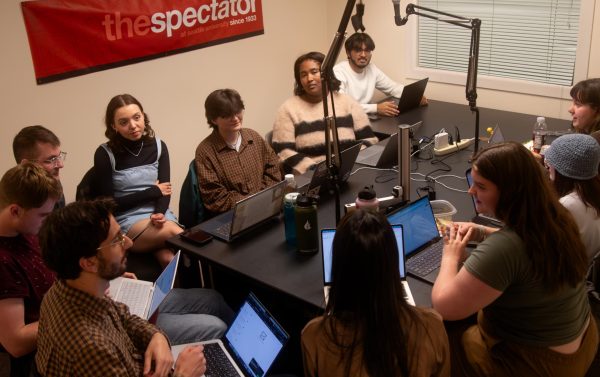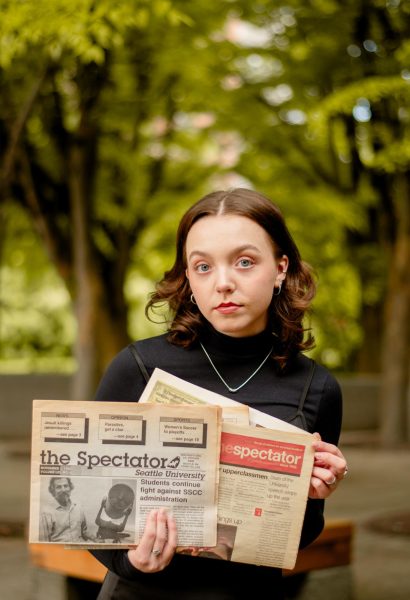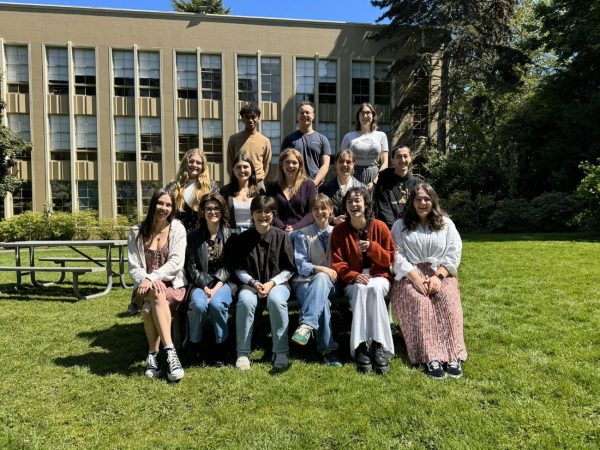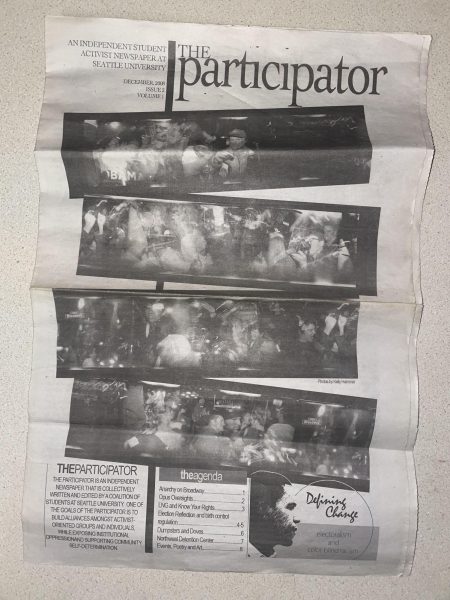Sound Transit’s DEIS Sparks Community Concerns
The Historic Chinatown Gate at the heart of Seattle’s Chinatown-International District, overlooking local businesses and existing rail stations.
The Chinatown-International District (CID), its community and Sound Transit face many considerations in light of Sound Transit’s Link Light Rail extensions that will provide service to West Seattle and Ballard—a $54 billion project affecting areas with majority residential populations.
Seattle University Assistant Professor of Public Affairs, Zachary Wood, noted that the situation is complex, requiring attention to population growth and transit needs as well as the area’s history of marginalization
“We can imagine that this is going to improve everybody’s lives in many ways if we dramatically enhance mass transit,” Wood said. “But we need to make sure that we are open and expansive in terms of how we’re thinking about the contexts and looking at a very contested history; specifically, marginalized Asian populations and in particular Chinatown, Japantown and Little Saigon.”
In the CID, the project will take anywhere from six and a half to eleven years of construction and include a new Light Rail station on either 4th or 5th Avenue. The project’s Draft Environmental Impact Statement (DEIS) was released this year, Jan 28 and closed for public comment April 28.
The 4th Avenue option will impact five to eight businesses, take eight to 11 years to build, will cause traffic disruptions and cost $500 million more to build than its alternative. The 5th Avenue option will impact 18 to 27 businesses, take 6.5 to 9 years to build, involve property demolition and place construction closer to the community than 4th.
The DEIS Executive Summary discerns that both options are expected to negatively affect three historic buildings, involve property acquisition and construction disruption.
Transit Equity For All, a group started by community members, created petitions advocating for Sound Transit to “move forward on 4th.” They are concerned there are potential impacts that were not sufficiently addressed in the DEIS. Their concerns include: sidewalk and street closures that could potentially pose danger to the elderly, construction disruptions like dump trucks, air pollution and dust as well as challenges to businesses already struggling due to the COVID-19 pandemic.
Brien Chow, who is part of Transit Equity for All and describes himself as a concerned citizen, joined a community advisory group organized by Sound Transit, summarized worries he brought up to organizers.
“5th Avenue doesn’t make any sense because there’s a huge impact and it’s going to have a lot of human cost,” Chow said.
The Wing Luke Museum of the Asian Pacific American Experience published an open letter detailing their own concerns with the DEIS, also including issues they feel were not sufficiently addressed. Neighborhood cohesion, construction impacts and historical background were all chief concerns in the letter.
“The DEIS does not adequately encompass the past historic reality of past public policies and actions, the everyday lived legacy of those actions to the present-day, and the subsequent real threats to future survival,” the letter reads.
The letter goes on to cite past infrastructure projects that have impacted the CID, two of which are the 1960s I-5 construction and 2015 streetcar lines. This is all while community members face a history of displacement.
Cassie Chinn, the deputy executive director of the Wing Luke Museum, explained that while the museum believes the 5th Avenue option would be devastating to the community since it’s right at the heart of the CID and historic King Street, both options still have negative impacts on the neighborhood.
“We didn’t want to fall into the system of picking one or the other that’s the lesser of two bads. That’s why we were emphasizing that both as they currently stand will have a devastating impact on the neighborhood,” Chinn said. “We pose the question, ‘Could there be further refinements?’ instead of having to pick one or the other.”
Betty Lau, a retired teacher who is also part of Transit Equity for All, who despite advocating for a move to 4th, echoed Chinn’s concern, feeling that the 4th Avenue option is the lesser of two evils.
“There has to be another unstudied alternative. It can’t be just ‘it’s this street or it’s this street.’ We need more creative solutions to provide the least damaging impacts,” Lau said.
Sound Transit has not yet made a decision or indicated a preference on which street to use for the development, and will not do so until 2023 once all of the 5,000 public comments are gathered, analyzed and presented to the Sound Transit Board.
Rachelle Cunningham, a public information officer for Sound Transit, emphasized that community members can still reach out to the project team even though the public comment period is over, and that the information is on Sound Transit’s online open house site.
“We’re going to be there to help people understand and support them through the process, which is sort of at the very beginning stages,” Cunningham said.
Lau, from Transit Equity for All, has concerns regarding information accessibility for her community. There is a large population of people who speak little to no English in the CID, and Lau expressed frustration with the lack of translated information.
“They [little or non-English speakers] have enough [English] to run a business, take orders, do some banking, take care of the till. But no information that is so critical to understanding of this project is in any of the languages of the district. The only thing that has been translated are their rosey brochures and 58-page executive summary,” Lau said.
After trying to join the group of community advisors Chow is a part of, Lau stated she was not notified whether or not she was chosen for the group. She emailed Sound Transit to ask about her application, and did not hear back until she received instructions to watch it via YouTube on the day of their first meeting.
“They excluded me. Period. That was because, I think, I had been so outspoken in the in-person meetings. I felt I had a responsibility to speak up for the non-English speakers,” Lau said.
As the project moves forward and more decisions are made, concerned citizens will continue to keep a close eye on community impacts, and Sound Transit will continue to consider their worries.
“The Chinatown ID is a place of belonging, a place of our cultural roots and who we are even if we don’t physically live here,” Chinn said “What happens in the Chinatown ID impacts our entire region.”






